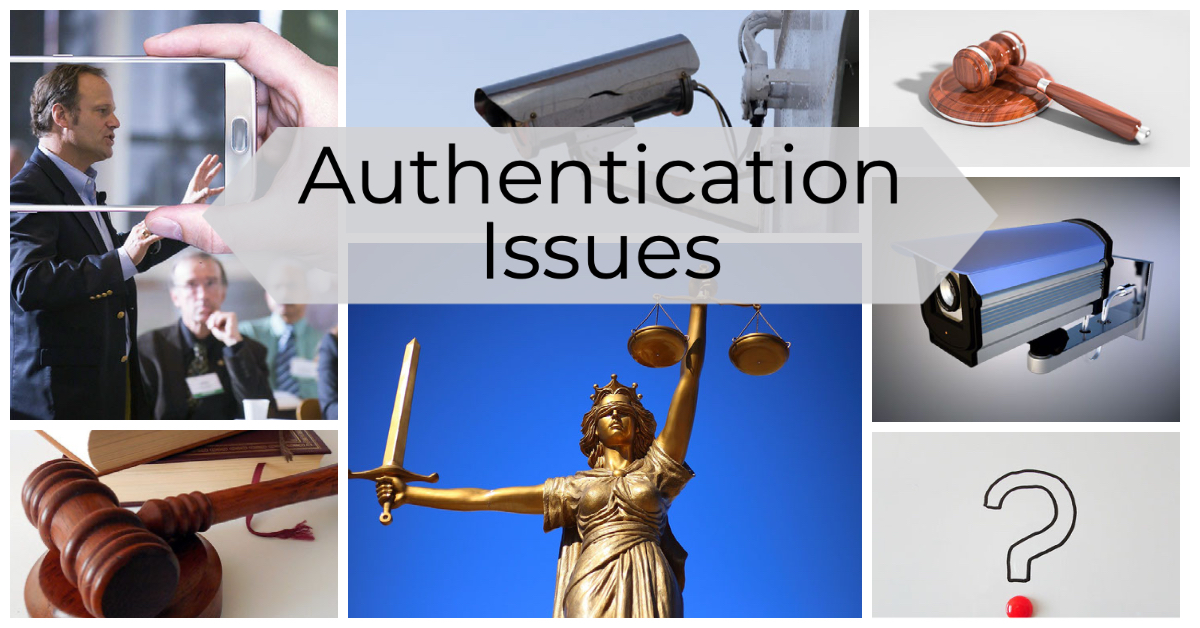Should video evidence be ruled inadmissible because an expert raises potential concerns regarding its authenticity? Mere speculation is insufficient to dislodge a prima facie showing of threshold authenticity according to the Court of Appeals of Oregon in State v. Sassarini, 300 Or.App 106 (Or.App., 2019), 452 P.3d 457.
The Facts
A dispute between neighboring property owners resulted in charges being laid against the defendant neighbor, supported in part by video recorded by the other neighbor, W. The video had been exported from W’s video camera to a DVD for trial purposes and at trial W confirmed that the video on the DVD was an accurate visual and aural representation of what occurred. He further confirmed that the video also matched the recording on the video camera. The defendant argued that the video file on the DVD was not authentic and to address that concern, the video was played from the camera’s memory card on the camera itself in court. W further confirmed that he had not altered the original video file. During an in limine motion, the defendant’s forensic video analyst testified to being suspicious that some editing had occurred and that he could not determine authenticity without examining the camera and the original recording.
Trial Court Ruling
During the in limine motion, the state argued that authenticity had been established as W confirmed the accuracy of both recordings and the police investigator also confirmed that the video on the DVD matched what he saw on the camera playback. The defendant argued that the analyst’s evidence raised an issue regarding the soundness of the recording. The trial judge ruled that the video on the DVD and the video on the camera’s memory card looked the same, despite the analyst stating that the metadata was different. The judge relied upon the original video in finding that there was no credible evidence of alteration and ruled that it was admissible. The jury could determine whether they thought the video was accurate. The defendant was convicted on one count and appealed her conviction arguing, inter alia, that the video evidence was admitted in error.
The Appeal
The Court of Appeals noted that one of the more challenging questions in the modern world is determining when digital evidence can be trusted, noting that digital media can be manipulated, distorted, and fabricated in such a way as to be detectable only by sophisticated viewers, if at all. In assessing whether the trial judge erred in admitting the video evidence, the Court noted that Oregon Evidence Code 901(1) provides that “…the requirement of authentication or identification as a condition precedent to admissibility is satisfied by evidence sufficient to support a finding that the matter in question is what its proponent claims.” OEC 901(1) requires the proponent to establish a prima facie showing of authenticity. Once that has been done, the trier of fact will determine authenticity rather than the trial judge by way of preliminary ruling. Among the factors to consider are the following:
Whether the recording is digital or analog, its authenticity will depend on factors such as whether the device was capable of making a reliable recording; the operator was competent; the recording itself was authentic and correct; no changes, additions, or deletions had been made; the recording was preserved; when necessary, it is possible to identify speakers and actors in the recording; and, when offered to show purportedly voluntary statements, the recording depicts statements that were not made by inducement.
The Court ruled that the state satisfied the OEC 901(1) threshold through the confirmatory evidence of W. The speculation of the defendant’s analyst did not detract from the trial judge’s finding. The analyst’s concerns regarding the metadata on the DVD were limited to the DVD itself and were likely explainable by the way the DVD was duplicated by the police. The analyst had not examined the original recording and accordingly could offer no opinion on the authenticity of it. In sum, the defendant was unable to do more than speculate about authenticity concerns and such speculation was not sufficient to dislodge the evidence led by the state.
Analysis
Speculation about authenticity is unlikely to result in exclusion of evidence in the absence of substantive evidence that casts serious doubt on the integrity of the recording. In this case, the analyst was not afforded the opportunity to examine the camera or the original recording and the defendant’s motion for a continuance to allow that to occur was denied by the trial judge, upheld by the Court of Appeals. As a result, the analyst was limited in his comments to the DVD that was produced by the police. Based on this limited evidence, it is not surprising that the analyst could do little more than point out possible concerns with the copy in the absence of a full examination of the original media. This is not a failing on the part of the analyst. On the facts of this case, it seems unlikely that authenticity would have been sufficiently challenged so as to deny the jury to opportunity to consider the video evidence given that W confirmed the accuracy of the recordings.
The ruling in Sassarini is not unique to Oregon. OEC 901(1) is similar to provisions in most states and the Federal Rules of Evidence. The principles enunciated in this case enjoy broad support in other jurisdictions.
